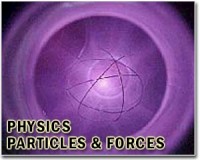 |
Washington DC (SPX) Jan 28, 2011 The first large-scale, physics-based space weather prediction model is transitioning from research into operation. Scientists affiliated with the National Science Foundation (NSF) Center for Integrated Space Weather Modeling (CISM) and the National Weather Service reported the news at the annual American Meteorological Society (AMS) meeting in Seattle, Wash. The model will provide forecasters with a one-to-four day advance warning of high speed streams of solar plasma and Earth-directed coronal mass ejections (CMEs). These streams from the Sun may severely disrupt or damage space- and ground-based communications systems, and pose hazards to satellite operations. CISM is an NSF Science and Technology Center (STC) made up of 11 member institutions. Established in 2002, CISM researchers address the emerging system-science of Sun-to-Earth space weather. The research-to-operations transition has been enabled by an unprecedented partnership between the Boston University-led CISM and the National Oceanic and Atmospheric Administration (NOAA)'s Space Weather Prediction Center. "It's very exciting to pioneer a path from research to operations in space weather," says scientist Jeffrey Hughes of Boston University, CISM's director. "The science is having a real impact on the practical problem of predicting when 'solar storms' will affect us here on Earth." The development comes in response to the growing critical need to protect the global communications infrastructure and other sensitive technologies from severe space weather disruptions. This transition culminates several years of close cooperation between CISM and its partner organizations to integrate, improve and validate a model for operational forecast use. "This milestone represents important scientific progress, and underscores the effectiveness of NSF's Science and Technology Centers in applying research results to real-world problems," says Robert Robinson of NSF's Division of Atmospheric and Geospace Sciences, which funds CISM. CISM team members worked on-site with scientists and forecasters at NOAA's Space Weather Prediction Center to improve models and visualizations. Having key team members co-located during this critical phase of development enabled an ongoing discussion between forecasters and scientists that enhanced the development of the model, says Hughes, and ultimately led to NOAA's decision to bring it into operation as the first large-scale physics-based space weather model. CISM's research and education activities center on developing and validating physics-based numerical simulation models that describe the space environment from the Sun to the Earth. The models have important applications in understanding the complex space environment, developing space weather specifications and forecasts, and designing advanced tools for teaching, Hughes says. CISM partners include the U.S. Air Force Research Laboratory, NASA's Community Coordinated Modeling Center, and the NOAA Space Weather Prediction Center. The lead model developers for the work are CISM team members Dusan Odstrcil of George Mason University and Nick Arge of the Air Force Research Lab.
Share This Article With Planet Earth
Related Links National Science Foundation Understanding Time and Space
 U.S. atom smasher to be shut down
U.S. atom smasher to be shut downWashington (UPI) Jan 20, 2011 The planned shutdown the Fermilab Tevatron ends hopes it might win the race to find the most sought-after particle in high-energy physics, U.S. scientists say. The U.S. Department of Energy informed the Fermi National Accelerator Laboratory it was unable to come up with a $35 million a year to keep the Tevatron running until 2014, ScienceNews.com reported Thursday. The energy dep ... read more |
|
| The content herein, unless otherwise known to be public domain, are Copyright 1995-2010 - SpaceDaily. AFP and UPI Wire Stories are copyright Agence France-Presse and United Press International. ESA Portal Reports are copyright European Space Agency. All NASA sourced material is public domain. Additional copyrights may apply in whole or part to other bona fide parties. Advertising does not imply endorsement,agreement or approval of any opinions, statements or information provided by SpaceDaily on any Web page published or hosted by SpaceDaily. Privacy Statement |